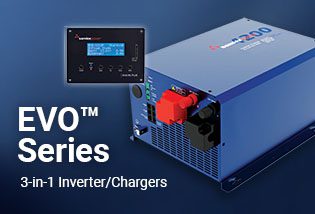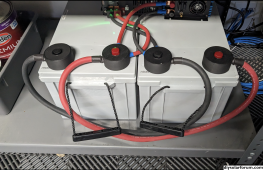Linwood
New Member
- Joined
- Jan 5, 2022
- Messages
- 18
I have a closet full of computer gear with low total load (maybe 400-500w) and several Cyberpower UPS's, that are basically disposable and I have to replace one every year or three.
I have been looking at some postings for DIY UPS setups with inverter/charger (or both separately) and battery(s) and thinking of building up something. The max current draw is modest so fits LiFePO4 and getting a longer run time is attractive.
This is not a solar setup, just pure UPS. Which brings up the question: absent some forced cycling, 99.9% of the time the battery would be charged to 100%.
How bad is this for battery life? Last thing I want to do is trade replacing cheap SLA batteries with expensive LiFePO4 batteries because I'm putting them in an abusive charge situation.
Most examples I find when searching are people trying to use charge/inverters from APC (etc) units off the shelf, I am not suggesting that. I am looking at something more like here: https://xtremeownage.com/2021/06/12/portable-2-4kwh-power-supply-ups/
Though I think I would want to do 24v at least, and maybe not as large.
Do I need to plan some technique to maintain, say, an 80% charge not 100% charge? Which may make double conversion difficult (i.e. charge while drawing power through output inverter for cleaner power to load).
If anyone has pointers to example UPS builds they are appreciated, but wanted a sanity check first -- is it even a good idea?
Linwood
I have been looking at some postings for DIY UPS setups with inverter/charger (or both separately) and battery(s) and thinking of building up something. The max current draw is modest so fits LiFePO4 and getting a longer run time is attractive.
This is not a solar setup, just pure UPS. Which brings up the question: absent some forced cycling, 99.9% of the time the battery would be charged to 100%.
How bad is this for battery life? Last thing I want to do is trade replacing cheap SLA batteries with expensive LiFePO4 batteries because I'm putting them in an abusive charge situation.
Most examples I find when searching are people trying to use charge/inverters from APC (etc) units off the shelf, I am not suggesting that. I am looking at something more like here: https://xtremeownage.com/2021/06/12/portable-2-4kwh-power-supply-ups/
Though I think I would want to do 24v at least, and maybe not as large.
Do I need to plan some technique to maintain, say, an 80% charge not 100% charge? Which may make double conversion difficult (i.e. charge while drawing power through output inverter for cleaner power to load).
If anyone has pointers to example UPS builds they are appreciated, but wanted a sanity check first -- is it even a good idea?
Linwood






